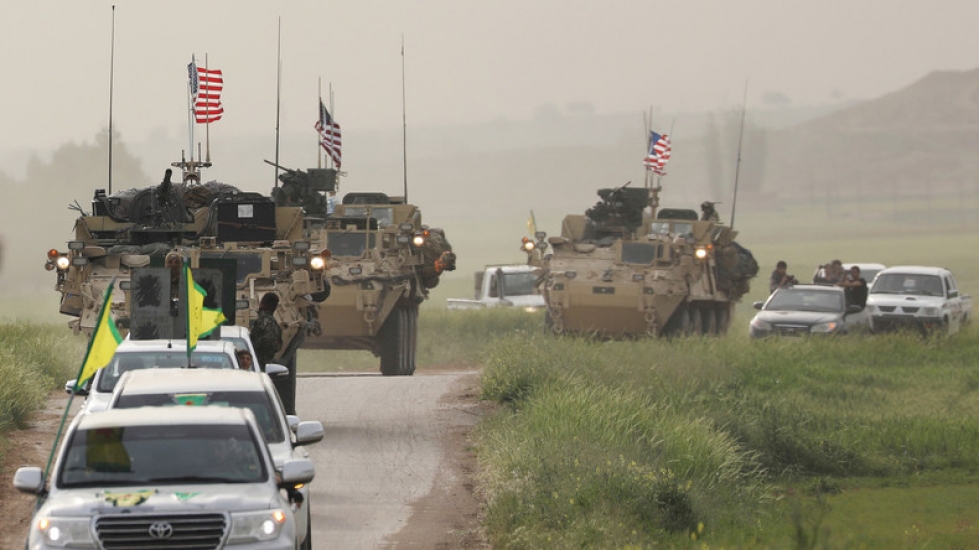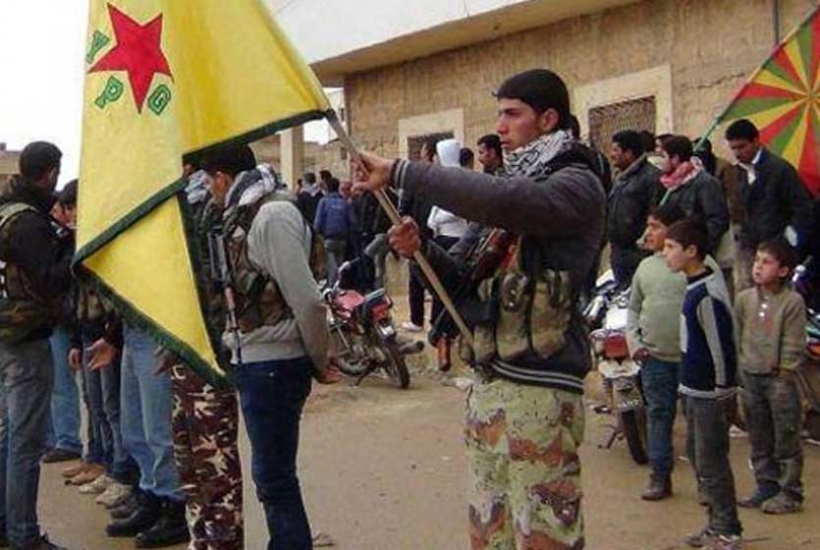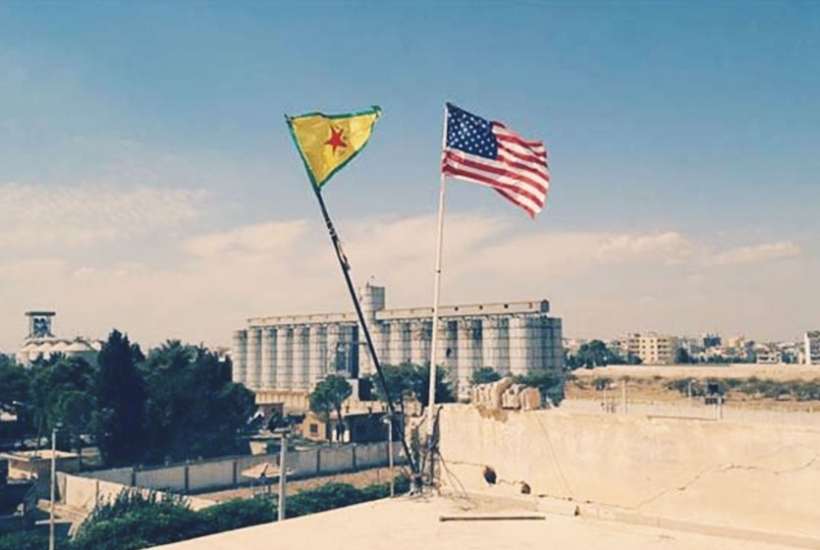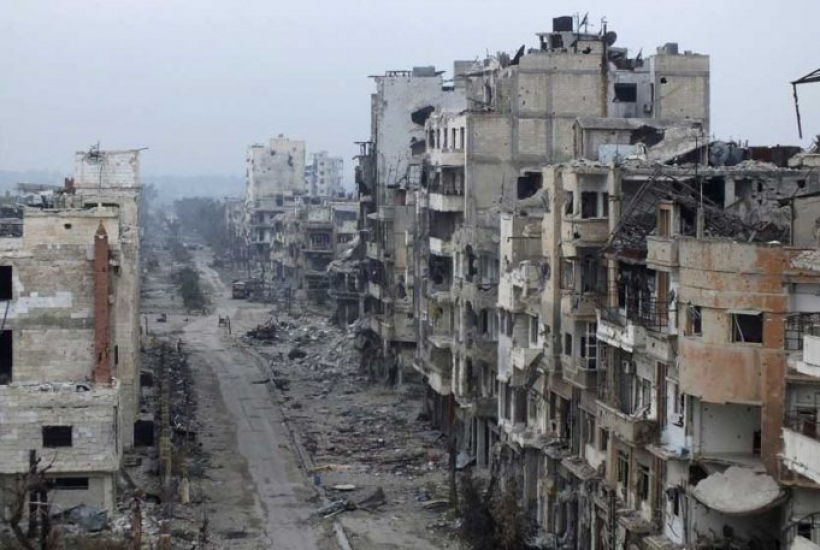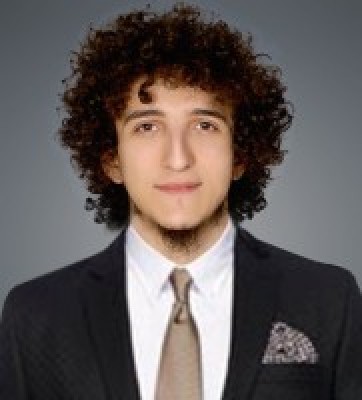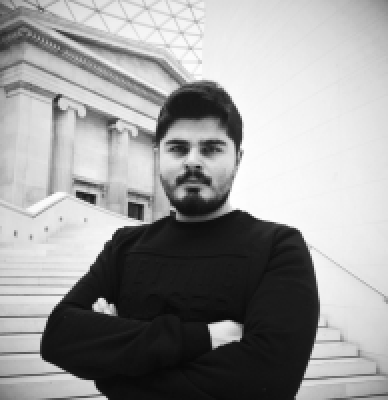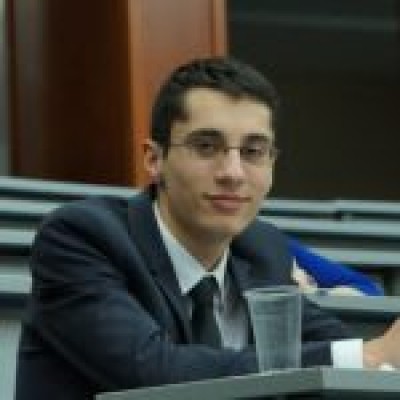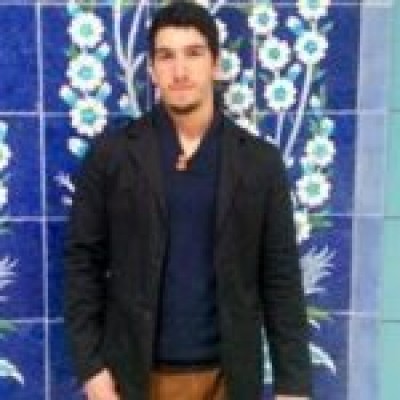Opinion
USA’s Deadlock of Terror in Syria: PYD/YPG Can Acun
USA’s Deadlock of Terror in Syria: PYD/YPG
In the early stages of the Syrian uprising beginning in 2011 with the impact of the Arab Spring, the US —providing military and political support for the Syrian dissidents— held the position that the Assad Regime had lost its legitimacy and should be toppled by a coalition that excluded countries like Russia and Iran. However, since the Iraqi-born Islamic State expanded its operations into Syria, the US changed its policy and took steps that resulted in the sustaining of the Assad Regime rather than supporting the dissidents. The US began to support the PYD/YPG in the fight against ISIS and slowly brought the PYD/YPG to the center of Syrian political sphere. During this ongoing process, and following the US election resulting in the Trump administration, the PYD/YPG’s position was strengthened by the Pentagon/CENTCOM-designed US strategy. The US, looking to derive benefit from this conflict between terror organizations, tried to expand its sway along the Syrian-Iraqi border through Manbij on the east-west axis, and the territories of Raqqa and Deir Ezzor to the east of the Euphrates River in the south.
Relating to this strategy, it has been argued that the PYD/YPG represents all Syrian Kurds. This was done by masking the group’s affiliation with the PKK and portraying it as a organization separate from the PKK. Turkey has responded to these moves by the US with Operation Euphrates Shield, the Astana Process, and currently, with Operation Olive Branch , while the US continues to support the PYD/YPG terror organization which threatens both Turkey’s national security and Syria’s territorial integrity.
The series of civil rebellion initiated by the Tunisian Uprising-caused a domino effect throughout the Middle East and a breakdown of the century-long status quo. Iraq and Syria were the countries most affected US occupation. Both countries remained stuck between the remnants of their old regimes and the chaotic circumstances of this new era, entering a hybrid period in which state authority was eroded and non-state actors flourished. As the PKK’s Syrian organization, the PYD/YPG took advantage of this chaotic environment and gained power south of the Turkish border. The Syrian Regime supported the PYD/YPG in order to dominate more opposition-oriented Kurds and use the PKK as a means to threaten Turkey.
In this context, at the beginning of 2012, the YPG took control of the Hasakah region starting with Qamishli by repressing other groups, and built military fortifications in the area immediately after the withdrawal of Regime-aligned forces from al-Hasakah, Ayn al-Arab (Kobanî) and Afrin. After consolidating its control in these territories, the YPG bypassed Kurdish dissidents and set their target on the Syrian rebels.
In the first days of January 2014, ISIS occupied a large portion of Syrian territory previously controlled by the rebels including Raqqa, al-Hasakah, the east of Aleppo and the north of the country east of the Kurdish-controlled territory along the Turkish border after which it started to attack the YPG . After occupying a substantial area of YPG territory, ISIS targeted Ayn al-Arab in the midst of 2014. In the face of these attacks, the PYD administration, and particularly Salih Muslim, sought international support and requested weapons from the US and the coalition against ISIS while nearly three hundred thousand civilians were taking refuge in Turkey. The US helped the PYD by launching an intense campaign of airstrikes against ISIS targets in Ayn al-Arab and supplied the YPG with weapons and ammunition.
With the intervention of the US, ISIS lost ground in the area and was repelled from Ayn al-Arab. This “Kobanî experience” proved that the US could turn the YPG into a useful land force against ISIS, while also signifying the importance of US support to the YPG . This military relationship gradually progressed and became evident in Tell Abyad and in other regions. Nevertheless, it didn’t take long for the PYD/YPG terror organization to terrorize the regions it occupied as did ISIS before. The PYD/YPG forcibly migrated Arab and Turkmen dissidents in al-Hasakah and Raqqa including in the Tell Abyad region by exploiting the advantage it derived from its engagement with the US and the Assad Regime. The group engaged in demographic engineering in the occupied regions. The PYD/YPG aimed to set up easily managed region in the occupied territory by means of oppressive actions, many of which constitute war crimes, such as the burning of villages, confiscation of property, extreme prejudice and mass sentencing, the result of which has been the changing of the demographic structure. These actions, having been reported by human rights organizations, were not sufficient to change the US position, which sustained its engagement with the terrorist organization.
As the US continues to be suspicious of dissidents , especially those of an Islamic-orientation, which it considered inconvenient and keeps at arm’s length, it has taken measures to prohibit other countries’ support for these organizations as well. As opposed to this, the US did not hesitate to give its limitless support to the PKK’s Syria organization, the PYD/YPG. Out of approximately seventeen hundred US airstrikes, twelve hundred of them were conducted in support of the YPG against ISIS. Moreover, it has been confirmed that the US did not provide air support for dissidents while they were fighting against ISIS.
As the US increasingly came under criticism —especially from Turkey— for its engagement with a terrorist organizations, it tried to veil the PKK/YPG by creating an alliance called the Syrian Democratic Forces (SDF), on the 11th of October, 2015. The SDF consisted of such forces as the Syriac Military Council, Jaysh al-Suwar, Liwa Suwar ar- Raqqa, Liwa al-Tahrir and al- Sanadid. However, as CENTCOM commanders confessed, this organization was planned directly by the US as an organization working under the control of the YPG. The US conducted military operations under the organization’s name in order to give the impression that it supported the SDF instead of the YPG.
In this period, President Barack Obama sent US Special Operations Forces to the area in order to train SDF/YPG fighters . Appointed by President Obama as The Special Presidential Envoy for the Global Coalition to Counter ISIS, Brett McGurk paid numerous official visits to the area and held talks with the SDF/YPG. The US set up two bases in the area which are controlled by PYD. In July 2016, after the Ayn al-Arab base was set up, another airbase began operation in Rimelan, a region close to Hasakah . Within that period, the quantity and quality of the weapons provided to the SDF/YPG bagan to increase. Despite the objections of Turkey, Manbij, a strategic region on the west bank of the Euphrates River, was occupied by the US-SDF/YPG alliance on May 31, 2016.
After occupying Manbij, the YPG’s main objective became the capture of the Jarabulus-al Bab region, thus expanding and consolidating its territory through unification with the Afrin Canton.However, Turkey’s Euphrates Shield Operation successfully countered this move, and the Trump administration heralded a new period for both Turkish-US and US-PKK/PYD relations. Contrary to Turkey’s expectations, Trump gave the Pentagon and CENTCOM (whose priority was maintaining the relations with YPG) full responsibility of Syrian policy. After the major US initiative to occupy Raqqa through the YPG/SDF whom it equipped with heavy arms and supported with heavy land and air support, this was also left to the YPG. The US assisted the YPG/SDF in gaining ground to the east of the Euphrates River —simultaneously with its move in Deir ez-Zor and Raqqa— to seize the main oil fields and natural gas reserves and to ensure that the Iraqi border remained unchanged.
The US has made all of its investments in Syria on the PKK-affiliated SDF/YPG in order to redesign the region from within boundaries running from the Syria-Iraq border to Manbij on the east-west, and along the eastern bank of the Euphrates River south of Raqqa and Deir ez-Zor. The US is currently caught in a snag and has become deadlocked in the region as Turkey, Russia and Iran challenge American maneuvers on different fronts.
The PKK/PYD Faces Survival Problems Necdet Özçelik
The PKK/PYD faces survival problems
Operation Olive Branch (OOB) achieved most of its military objectives after pushing the PKK/PYD forces from Afrin city center on March 18th. As of April 7th, %80 of Afrin territory has been under the control of operation forces and almost %50 of the estimated 8000 of PKK/PYD terrorists were killed or captured.[1] The rest of the terrorists are known to have escaped to Tel Rifat, which is under control of the PKK/PYD, or to the regime-controlled towns of Zahra and Nubl in the southeastern of Afrin. The operation is ongoing with IED and landmine cleaning efforts in the city center. After the cleaning of the city, it is expected that civilians will be allowed to return to Afrin.
OOB in Afrin has dramatically impacted the PKK/PYD policies in Syria and Iraq. OOB has terminated the terrorist control of territory in northwest Syria and has made clear to the PKK and its allies that such control is not sustainable without the physical presence of a foreign military in Syria and Iraq. The PKK/PYD seems to have developed a new policy of either to withdraw from problematic territories which are not actively supported by foreign military forces or else to reinforce its control in areas where they are already directly supported by foreign military forces.
The PKK/PYD considers Russian policy in northern Syria unfavorable and there seems to be no rational grounds to sustain its relations with Russia in Tel Rifat; instead, the Syrian regime and Shiite militias are much more preferable because of the shared objective of preventing further Turkish advance. On the other hand, the PKK/PYD had to face serious pressure to split its armed elements that were pushed from Afrin by OOB forces; the PKK/PYD maintained some of these in the Tel Rifat area and sent others to the Zahra area, moving the rest to Manbij and the eastern part of the Euphrates River. In maintaining elements in Tel Rifat and sending others to Zahra, the PKK/PYD expects to strengthen good relations with Syrian Regime and Iranian Shiite militias while putting distance with Russia. The PKK/PYD is to reinforce its existing relations with the U.S., Britain and France by moving the rest of its armed groups to Manbij and the east of the Euphrates River. The PKK/PYD might be expected to pursue sympathy from other NATO countries such as France amidst unpredictable U.S. policy in Syria.
On March 23rd,The PKK/PYD declared that it would withdraw from Sinjar, in the northwest of Mosul in Iraq,; five days after OOB liberated downtown Afrin from PKK/PYD elements.[2] The Iraqi government announced that the PKK/PYD already withdrew from Sinjar and there was no need for Turkey to carry a military operation there.[3] The PKK is believed to have moved its armed elements in Sinjar to other areas of northern Iraq and northeast Syria. It is known that the PKK was intimidated by a possible Turkish military operation in Sinjar as part of the Turkish strategy of de-territorialization of the PKK.[4] However, the local PKK-affiliated armed groups (YBŞ) in Sinjar are still there and their presence is considered to be within the realm of intervention for Turkey, which may carry out a large scale military operation if the connection between the PYD in Syria and the PKK in Iraq is not satisfactorily prevented by the Iraqi government.
The PKK/PYD faces a severe survival challenge and it is too vulnerable orienting itself into different alliances. Thus; it has already lost hope in Russia but is trying to build an alliance with the Syrian Regime which itself is surviving with the support of Russia. The PKK/PYD is trying to deepen its relations with France and Britain amidst hesitation in U.S. policy.[5] The PKK/PYD is trying to bring about a more militarized approach from the U.S. by engaging with U.S. CENTCOM, encouraging anti-Trump circles in the defense and military bureaucracies to raise their voice against the U.S. administration. Deaths of U.S. and U.K. special operations soldiers in Manbij on March 30th is expected to be instrumentalized by the PKK and CENTCOM to pave the way for legitimization of reinforcing such relations.[6] Brett McGurk’s remarks on Trump’s comments on U.S. withdrawal from Syria had also come after this incident.[7]
In terms of the PKK/PYD, Turkey’s primary objective in Syria seems to be to oust the PKK/PYD from the areas it controls in the west of the Euphrates River and contain the PKK in the northeast so as to make its presence too costly for both the PKK and the U.S. Turkey is also increasing pressure on the PKK in Iraq in order to force its withdrawal from Sinjar and the mountainous areas in the northeast of the country. In the case of Sinjar, the Turkish strategy aims to de-territorialize the PKK, and to cripple the transition of PKK fighters between Syria and Iraq, as well as to establish that the PKK represents a common threat for both Iraq and Turkey at the same time. In the northeast of the country, Turkey is also pushing for the de-territorialization of the PKK in the Zap, Avashin-Basyan and Khakurk areas and is pursuing the containment of the PKK in the Qandil Mountains for a final operation. Moreover, Turkey is also exerting pressure on the KRG and on Iran to persuade them that the PKK is a common threat in this area.
Turkey’s strategy of de-territorialization of the PKK in Syria and Iraq corresponds with the interests of other regional actors. The PKK has become the common enemy of Syrian Arabic and Kurdish opposition groups in Syria and a common threat for the Iraqi central government, KRG and other non-state Kurdish, Turkmen and Arab actors in Iraq. The Turkish OOB was key in creating a situation conducive to curbing PKK/PYD efforts towards becoming a regional actor, and now the PKK/PYD faces an ultimate challenge of survival.
Dipnotlar
[1] Turkish Armed Forces (TAF) Press Release, April 7,2018, http://www.tsk.tr/BasinFaaliyetleri/BN_44
[2] PKK announces withdrawal from Shingal, handover to Iraqi forces, K24, March 23,2018, http://www.kurdistan24.net/en/news/fb89281a-9f61-48bf-8da3-0f38ff2912e6
[3] Irak: PKK Sincar’dan çekildi, Türkiye’nin harekat düzenlemesine gerek yok, Sputnik, 5 April 2018, https://tr.sputniknews.com/ortadogu/201804051032925359-irak-pkk-sincardan-cekildi-turkiyenin-harekat-duzenlemesine-gerek-yok/
[4] Cumhurbaşkanı Erdoğan: Sincar’a çok fazla tahammülümüz yok, Anadolu Agency, 26 March 2018, https://aa.com.tr/tr/gunun-basliklari/cumhurbaskani-erdogan-sincar-a-cok-fazla-tahammulumuz-yok/1099557
[5] French leader promises to support SDF in Syria, TRT World, March 30, 2018, https://www.trtworld.com/europe/french-leader-promises-to-support-sdf-in-syria-16335
[6] US and British troops killed in Syria blast, March 30,2018, CNN, https://edition.cnn.com/2018/03/30/politics/syria-coalition-ied/index.html
[7] McGurk’s tweet on killing of U.S. and U.K. soldiers in Manbij, March 30,2018, https://twitter.com/brett_mcgurk/status/980176303084228608
Countering US-created SDF Deception in Syria Mohammad Pervez Bilgrami
Countering US-created SDF deception in Syria
From the beginning of Syria’s armed conflict, the US never wanted to give Turkey any important role inside Syria. On several occasions, the US declined Turkey’s offer to clear DASESH along with its border and the important cities of Raqqa and Deir-ez-Zor[1]. On the other hand, the US clandestinely trained and armed the Peoples Protection Unit (YPG), the Syrian wing of terrorist organisation PKK. The US with its unequivocal patronage tried its best to provide this terror outfit the required legitimacy. When Turkey took a strong stand on US support of YPG on the grounds of fighting against DAESH, the US has rebranded the YPG in Syria with a new name, Syrian Democratic Front (SDF), by conscripting few Syrian Arabs and Turkmen.
SDF from the very beginning was a US tool to actually arm and establish the YPG to control the large swath of land in the West of Euphrates to eventually divide Syria on the ethnic lines. The entire plan was to block Turkey’s movement inside Syria and expurgate its reach to the Arab world by controlling the Syria’s border with Turkey.
Turkish President Erdogan clearly stated that “whoever invented DAESH is the one who established PYD”[2]. The US on grounds of fighting the DAESH then rebranded the YPG as SDF to strategically block its NATO partner Turkey’s regional access and its growing role in Middle Eastern politics. The US-created SDF is as democratic as the Democratic People’s Republic of Korea (North Korea). Both use the common word “Democratic”, and it can be clearly understood from the statement of US Army General Raymond Thomas, the head of Special Operations Command, “I thought it was a stroke of brilliance to put democracy in them somewhere. But it gave them a little bit of credibility.”[3]
Under the guise of the NATO alliance and strategic partnership, the US plotted to sow the seed of a Terror State in northern Syria whereas northern Iraq was already infested with PKK terror for decades in the past. It is a well- known fact that the US has provided its support to terrorist and militant organizations across the world at many occasions in the recent history, its diabolical support to non-state terrorists has been prominent in Latin America, the Middle-East, Southern Africa, and Central Asia[4]. Both the trump administration and the previous Obama administration had made promises on many occasions which they never kept .When Turkey realized the US game plan in Syria, it first repaired its relationship with Russia and launched the Operation Euphrates Shield in August 2016 and cleared DAESH from Al-Bab region and handed over the area of 2225 square Km to Syrian Interim Government[5]. After evaluating that the Trump administration is following the footsteps of Obama in Syria, Turkey has begun the Operation Olive Branch in Afrin to clear the terrorist PKK/YPG from its border. It is expected that, sooner or later, Turkey would be able to clear Manbij also from the YPG in the same manner.
After Raqqa and Dier-ez-Zor areas were cleared from Daesh by the US-backed forces, with some fighting and more negotiated withdrawal of Daesh fighters by providing them safe passages, and when some normalcy returned in the YPG controlled areas, the Syrian Arab majority and the Turkmen minority of these areas started showing their resentment on YPG’s high-handedness in their own land[6]. Reports of demonstrations of local Arabs started emerging from Manbij and some other places.
It was apparently clear from the beginning that the anger among Arabs and Turkmen members within the superficial SDF group will rise against YPG once the Daesh is beaten. The first major breakthrough came with the defection of SDF brigadier general and spokesperson Talal Silo, an ethnic Turkmen commander who broke away with YPG in November last year and joined the Turkey backed FSA in Azaz[7].
First the US flatly failed to untie the organic link of YPG and PKK and later its SDF project was also fell flat. After failing, it made it as all-inclusive Syrian opposition group fighting against Assad, and finally its inconsistent attitude on terrorism and many promise breaks with Turkey put the US in a sticky situation.
Turkey succeeded in exposing the US bluff of SDF in Syria. By breaking this bluff, Turkey will be in a position to counter the US scheme of breaking Syria into mini-states in the same way it countered the US-Israeli plan of breaking of Iraq through KRG referendum in the Northern Iraq. If US succeeds in its plan of partitioning Syria and Iraq, this operation will definitely not stop in Levant and Iraq it will further fracture and balkanize the greater Middle East. The new Lawrences’ plan to do more Sykes-Picot in the Middle East will be operationlised on the ground, but there will be no easy cakewalk for the US, from now onward, it will have to face a tough resistance from Turkey in its devilish design to divide Syria. Unfortunately, there is no lack of lackeys in the Middle East even in the 21st century. It now remains to be seen how would be the overall Russian stance on US plan. Will Russia go beyond statements and help Turkey in preventing the division of Syria where Russia has already got more than it wished for? Russia has consolidated the Tartus Naval base and created the large Hmiemim military base in Latakia and soon will get Abu al-Duhur base in Idlib. Thus, the Russians have already got the fair share, so does the Iranians in Assad’s controlled areas which is well above the half of Syria’s total 185000 square Kms.[8] Fighting is still on in these de-escalation zones unlike the US- controlled area in the east of Euphrates which is relatively calm.
Unlike Manbij which is in US control, US did not show the strong interest against Turkish determination in Afrin as it was the Russians who helped YPG to wrest control of the Afrin canton. The US will try to hold the territories to West of Euphrates as long as possible in order to consolidating its position in East of Euphrates area. After clearing Afrin and then possibly the Manbij, the obvious question will arise about the future of large area controlled by US- backed YPG.
It seems that before the beginning of a serious dialogue and three major parties sitting on the table, the Russian backed Assad regime will control around 55% land, the US backed YPG around 25%, and Turkey plus Syrian rebels will be controlling around 15-20% of Syria[9]. In its controlled area, Turkey will rehabilitate the Syrian refugee population presently in Turkey, which is around 3.5 million along with the recently displaced Syrians from Idlib, Hama and Aleppo countryside.
In their controlled area, the US and YPG have the population problem like the Iranians are facing in their adventure in Syria. In any case, the small Syrian Kurdish population can’t replace the large Arab population in the vast areas west of Euphrates[10]. As people will settle after the oyster of Daesh the Syrian Arabs will revolt against minority YPG rule over majority Arabs. Kurds still are a small minority in Afrin, Manbij and other YPG controlled areas.YPG has also committed lots of atrocities including ethnic cleansing to strengthen their control over majority Arabs. They forced the people to leave their homes and tried to inflict the demographic change by resettling the Kurds in these areas, and now friends- relatives of victims most probably made their truck ready to return to their homeland in Afrin and are waiting for Manbij, Raqqa and Deir-ez-Zor to be cleared from SDF-YPG.
The US has faced the formidable challenge in providing the legitimacy to the militias it has created. The US is not only facing challenges in media war but also has to confront the military and strategic counter moves from Turkey on the ground in Syria. Turkish military action in Manbij and West of Euphrates occupied by US- backed forces may face some obstacles due to significant presence of US military personnel supporting YPG but one thing is sure that US flip-flop on YPG/PKK/SDF in Syria has provided Turkey an opening to secure its national interests by practicing strategic autonomy out of collective NATO security architecture.
Footnote
[1] https://www.nytimes.com/2016/09/08/world/middleeast/erdogan-raqqa-syria-isis.html[2] https://www.tccb.gov.tr/en/news/542/87373/whoever-invented-daesh-is-the-one-who-established-pyd.html[3] https://www.reuters.com/article/us-mideast-crisis-usa-ypg/u-s-general-told-syrias-ypg-you-have-got-to-change-your-brand-idUSKBN1A62SS?il[4] http://www.worldbulletin.net/news-analysis/178142/the-phenomenon-of-daesh-a-treacherous-imperial-design[5] http://aa.com.tr/en/middle-east/free-syrian-army-subgroups-unite-to-form-national-army/1019002[6] https://www.cbsnews.com/news/report-us-allowed-isis-fighters-escape-raqqa-sdf-deal/[7] https://in.reuters.com/article/mideast-crisis-syria-defection/senior-official-in-u-s-backed-syria-forces-defects-to-turkey-rebels-idINKBN1DF2GG[8] https://themoscowtimes.com/articles/putins-goals-in-syria-went-beyond-saving-assad-60121[9] http://www.aljazeera.com/indepth/interactive/2015/05/syria-country-divided-150529144229467.html[10] https://www.ft.com/content/40dabd50-d072-11e7-b781-794ce08b24dc
Turkey’s strategic positioning in Syria through stabilisation and reconstruction
Turkey’s strategic positioning in Syria through stabilisation and reconstruction
The incidences like the US betrayal, the European intrigues and the Arab short-sightedness have compelled Turkey to modify its Syria policy. Turkey’s new strategy in Syria started taking shape after Turkey-Russia rapprochement attained in late June 2016 following the fateful November 2016 Jet crisis when a Turkish F-16 fighter jet downed the intruding Russian Su-24 fighter plane.
In mid-December 2016, President Recep Tayyip Erdoğan of Turkey and Vladimir Putin of Russia agreed to suggest Astana, the capital of Kazakhstan, as a new venue for carrying on the Syria peace talks. On 20 December 2016, the foreign ministers of Turkey, Russia and Iran agreed, pursuant to the United Nations Security Council Resolution 2254, to hold Syria peace talks in Astana. On 28 December 2016, Turkey and Russia agreed on a nationwide ceasefire plan for Syria to go into effect at 00:00 on 30 December 2016. DAESH, al-Qaiada affiliate Nusra Front, and the Syrian wing of Kurdistan Workers Party (PKK) the Kurdish Peoples’ Protection Unit (YPG) were excluded from the ceasefire, and all other remaining rebel groups signed the deal .1 Soon after the Astana deal, al-Nusra Front re branded itself as Jabhat Fateh al-Sham after separating itself from al-Qaida formed an umbrella of rebel groups Hayat Tahrir al-Sham (HTS).This deal provided Turkey to create self-controlled de-escalation zones in the rebel-controlled Idlib, parts of Aleppo and small patch of Latakia provinces in Northern Syria . Now, Turkish military is fast building the observation posts to monitor the internationally agreed ceasefire agreement.
By establishing the de-escalation zone, Turkey’s prime strategy was to stop the further influx of refugees inside its territory. Secondly, to prevent the break-up of the Syrian state, as the disintegration would actually result in the empowerment of the US-backed YPG in Syria. Thirdly, to quickly rebuild the infrastructure in the de-escalation zone to bring the life back to normal; and finally to negotiate a political solution on behalf of the opposition it now backs.
The Turks have swiftly rebuilt the infrastructure in the city of Al-bab and other liberated towns and villages after expelling DAESH through the Operation Euphrates Shield. In a few weeks’ time, the rubble was completely removed from the city, the water and sanitation networks that were destroyed were got repaired, Bakeries, schools and Hospitals were reconstructed and rehabilitated.
It is difficult to determine the accuracy of Syria’s population and the precise number of Syrian refugees now scattered in many different countries of the world. Though the Pre-Arab uprising population of Syria was estimated at 21 million in 2010, and this number dropped to 18 million in late 2017.2 According to the latest UNHCR data, there are around 5.3 million registered Syrian refugees in several neighbouring countries where nearly 3.3 million refugees are in Turkey, remaining 2 million plus scattered in Lebanon, Jordan, Iraq and Egypt. There are about 1 million registered asylum seekers in 37 European countries 3 and another half a million plus refugees in other parts of the world. These figures suggest that there are around 7 million Syrian refugees in different parts of the world, and the current population of Syria within and outside the country is around 25 million.
The liberated Euphrates Shield area of around 2,225 square kilometre of Aleppo province which includes major cities, each with a population of more than 100,000 such as, Azaz, al-Bab, Jarablus, Marea. In addition to that, there are dozens of densely populated small towns and villages in this area. The Syrians from other areas are now relocating in the liberated areas and its population has risen to 5, 00,000. 4 The current estimation of population of the Turkey monitored de-escalation zone in Idlib province, as well as north-eastern areas of Latakia, western areas of Aleppo and northern areas of Hama province is around 2.5 million. That makes more than three million Syrian population under the Turkish controlled safe zone. More than 6.3 million Syrians are now internally displaced 5 and Idlib had been the regime’s dumping ground where many internally displaced Syrians settled in last few years.
Afrin, Manbij and the vast area falling east of Euphrates river starting from Northern Aleppo to al-Hasakah to Raqqa and Deir ez-Zor is now under the control of the US- backed YPG, and about 3 million Syrians still live in that area. The YPG is alleged to have been involved in the acts of ethnic cleansing and displacing the Arab and Turkmen population from the areas it took back from the ISIS. There are million more Syrians in scattered rebel-held areas of other de-escalation zones in Rastan and Talbiseh enclave in northern Homs province, Eastern Ghouta in the northern Damascus countryside, Deraa and Quneitra provinces, Eastern Qalamoun region in the Rif Dimashq. With these figures, approximately 11 million Syrian population remains under the Asad regime.6 If we include the refugees also, roughly 40-45% of the total Syrian population remains in the regime controlled areas.
Syria’s total landmass is roughly around 1,85 thousand square kilometres in which the US-backed YPG controls around 27% Syrian territory and the Turkish backed rebels along with the de-escalation zones control around 15 % area, and most of the rest inhabited areas (54%) including the major cities of Damascus and Aleppo are now under Asad regime.7 The map of Syrian territory as of December 2017 shows that the Daesh has lost all of its major urban strongholds and is now confined to the sparsely-inhabited desert area in Syria. So the Russians helped the Asad regime to regain the land but the population left there to be ruled is quite low. If Turkey manages to bring relative peace in the proposed safe zone, this will make nearly one-third of the present Syrian population under the direct Turkish administration.
Turkey’s next target will be the YPG-controlled cantons of Afrin and Manbij. Gaining control of Afrin seems easier than pushing YPG forces east of Euphrates as Afrin canton controlled by YPG is with the Russian military support, and Russia and Turkey have more convergence on Syria than Turkey and its NATO ally, the US.
Turkey’s experience in disaster management, infrastructure rebuilding, and professional humanitarian aid and assistance put the country in a different league.8 All these skills along with the determination to rebuild and unify Syria will pave the way for the Syrians presently under the regime and the YPG controlled areas to embrace Turkey. With a huge Syrian population under its shield, Turkey will ultimately hold the key in any future political settlement of Syria.
After establishing its headquarters in the city of Azaz in the liberated northern Syria, Turkey is now investing in the Syrian interim government 9 to institutionalise a unified political and military body to manage the administrative and military affairs in these areas. Proper management and governance in the safe zone will further improve the standing of interim government, and it will emerge as an alternate to Assad regime.
In the wake of such positive developments now visible in the politically strategic arena of Syria, different rebel groups have since been handing over the border crossings and other installations to the interim government. The revenue generated through taxation will directly go into the exchequer of the interim government and which will help in managing the local administrative affairs in liberated areas.
Though the Russians have saved Bashar al-Assad from an inevitable debacle in 2015, they know well that ultimately Assad will have to go down while meeting his ultimate destiny. The huge Syrian population under Turkish administration and millions of refuges outside Syria will definitely play an important role in defining the future of Syria. Thus, the successful formation of safe zones will lead to reduction of armed-conflicts and the demand for a political solution of the conflict will definitely get prominence. Suffice to say that a free and fair election will be the key factor to determine the future of Syria, and Turkey will obviously be the most impacting and justifiable force in the whole process of settling Syria’s future and restoring peace in the region.
Footnotes
1 http://www.aljazeera.com/news/2016/12/russia-turkey-broker-nationwide-ceasefire-deal-161229154943609.html2 http://www.worldometers.info/world-population/syria-population/3 http://data.unhcr.org/syrianrefugees/regional.php4 https://www.al-monitor.com/pulse/en/originals/2017/08/syria-recreational-facilities-aleppo-countryside-euphrates.html5 http://www.internal-displacement.org/global-report/grid2017/6 http://www.nrttv.com/En/Details.aspx?Jimare=176517 http://www.syriahr.com/en/?p=783528 http://www.aljazeera.com/news/2017/12/syria-post-war-reconstruction-booming-jarablus-171213173713605.html9 https://www.al-monitor.com/pulse/originals/2017/10/syria-levant-front-border-crossing-interim-government.html

